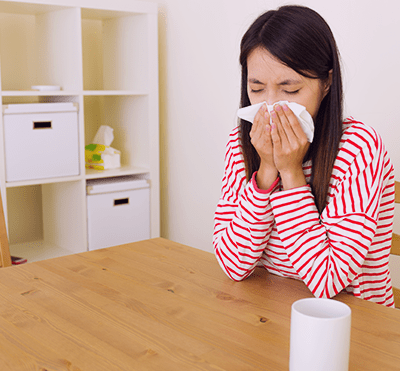Indoor air quality is a crucial aspect of maintaining a healthy home, yet it is often overlooked. Many homeowners may not realize that their indoor air can be more polluted than the air outside. Common indoor air pollutants can significantly affect your health, comfort, and overall well-being. In this post, we will explore some of the most common indoor air pollutants, their effects on health, and steps you can take to improve your home’s air quality.
According to the EPA, indoor air can be up to five times more polluted than outdoor air, which makes improving indoor air quality a crucial aspect of home maintenance.
What Are Common Indoor Air Pollutants?
Indoor air pollutants are substances that degrade the quality of the air in your home. These pollutants can come from a variety of sources, including household products, building materials, and even the air from outside. Some pollutants are more harmful than others, and their impact on health can vary depending on the level of exposure.
1. Dust and Allergens
One of the most common indoor air pollutants is dust. Dust is made up of tiny particles, including dirt, dead skin cells, pollen, and pet dander. While dust is generally harmless in small amounts, it can cause allergic reactions and exacerbate asthma symptoms when it accumulates in large quantities.
Dust mites, which are microscopic creatures that thrive in warm, humid environments, are also a major contributor to indoor allergens. These tiny organisms feed on dead skin cells and can trigger allergic reactions in sensitive individuals. Common symptoms include sneezing, runny nose, itchy eyes, and wheezing.
2. Volatile Organic Compounds (VOCs)
Volatile organic compounds (VOCs) are gases emitted by certain household products, including paints, cleaning agents, air fresheners, and furniture. These compounds can cause a range of health issues, from mild irritation to long-term effects such as headaches, dizziness, and nausea. In some cases, prolonged exposure to high levels of VOCs has been linked to more serious conditions, including liver damage and cancer.
VOCs are particularly problematic in poorly ventilated areas, where they can accumulate to dangerous levels. If you notice a strong chemical smell in your home after using cleaning products or painting, it’s likely due to VOCs.
3. Mold and Mildew
Mold and mildew are fungi that thrive in damp, humid environments. These pollutants can grow on walls, ceilings, carpets, and other surfaces that are exposed to moisture. Mold produces spores that can be inhaled, leading to respiratory issues such as coughing, wheezing, and shortness of breath.
Exposure to mold can also worsen allergies and asthma. People with weakened immune systems are especially vulnerable to mold-related health problems. Common places where mold and mildew grow include bathrooms, kitchens, basements, and areas with water leaks or poor ventilation.
4. Pet Dander
For pet owners, pet dander is a common indoor air pollutant. Pet dander consists of tiny flakes of skin shed by cats, dogs, and other animals. These flakes can float through the air and settle on surfaces, causing allergic reactions in sensitive individuals.
Pet dander is particularly problematic for people with asthma or severe allergies. Symptoms can include sneezing, itching, and difficulty breathing. Even if you don’t have a pet, pet dander can be brought into the home on clothing or other items.
5. Carbon Monoxide (CO)
Carbon monoxide (CO) is a colorless, odorless gas that is produced by the incomplete combustion of fuels such as gas, oil, and wood. Appliances like gas stoves, water heaters, and fireplaces are common sources of carbon monoxide in the home. When carbon monoxide is inhaled, it can prevent the body from using oxygen properly, leading to symptoms such as headaches, dizziness, nausea, and confusion.
High levels of carbon monoxide exposure can be fatal. It’s essential to have carbon monoxide detectors installed in your home, particularly near sleeping areas, to ensure the safety of your family.
6. Radon
Radon is a naturally occurring radioactive gas that can seep into your home from the ground. It is colorless, odorless, and tasteless, making it difficult to detect without special testing. Long-term exposure to radon can lead to lung cancer, making it a significant health risk.
Radon is most commonly found in basements and lower levels of homes, but it can be present in any area of the house. Testing for radon is simple and inexpensive, and if elevated levels are found, mitigation systems can be installed to reduce exposure.
7. Tobacco Smoke
Secondhand tobacco smoke is another common indoor air pollutant, especially in homes where smoking occurs. Tobacco smoke contains thousands of harmful chemicals, including carcinogens and toxins that can damage the lungs and increase the risk of heart disease and respiratory illnesses.
Even if smoking occurs in a separate room or outdoors, tobacco smoke can linger in the air and settle on surfaces, affecting the overall air quality of the home.
8. Asbestos
Asbestos is a mineral that was once commonly used in building materials due to its heat-resistant properties. However, it was later discovered that asbestos fibers can cause serious health problems, including lung cancer and mesothelioma, when inhaled.
Older homes and buildings are more likely to contain asbestos in materials such as insulation, flooring, and roofing. If asbestos is disturbed or damaged, it can release harmful fibers into the air, which can be inhaled.
How to Reduce Indoor Air Pollution
Now that we’ve discussed some of the most common indoor air pollutants, it’s essential to know how to reduce their presence in your home. Here are a few tips to improve your indoor air quality:
- Use an Air Purifier: Air purifiers can help remove dust, allergens, and VOCs from the air. Choose an air purifier with a HEPA filter for the best results.
- Ventilate Your Home: Proper ventilation is key to preventing the buildup of indoor pollutants. Open windows, use exhaust fans, and consider installing a mechanical ventilation system.
- Regular Cleaning: Regular cleaning helps remove dust, pet dander, and other allergens from surfaces. Vacuum carpets and upholstery regularly, and wash bedding and curtains frequently.
- Control Humidity: Use dehumidifiers to reduce moisture levels in areas prone to mold and mildew growth, such as bathrooms and basements.
- Avoid Smoking Indoors: To protect your family’s health, avoid smoking inside your home.
- Test for Radon: If you live in an area where radon is common, consider testing your home for radon and installing a mitigation system if necessary.
Conclusion
Indoor air pollution is a significant concern for homeowners, as it can affect your health and comfort. Common pollutants such as dust, mold, pet dander, and VOCs can trigger allergies, asthma, and other respiratory issues. By taking steps to reduce indoor air pollution, such as improving ventilation, cleaning regularly, and using air purifiers, you can create a healthier living environment for your family.
If you’re concerned about the air quality in your home, ABC Cleaning Inc. offers professional air duct cleaning services that can help improve indoor air quality. Contact us today to learn more about how we can help!
Learn more
ABC Cleaning, Inc. | Common Indoor Air Pollutants
Get in Touch
If you’re concerned about the indoor air quality in your home, contact ABC Cleaning Inc. today. Our expert team is ready to provide comprehensive services to ensure your home’s air is clean and healthy.
Contact Information
Oviedo Office: 809 Eyrie Dr., Oviedo, FL 32765 | Tel: (407) 381-2120
Orlando Office: 1005 N. Pine Hills Rd., Orlando, FL 32808 | Tel: (407) 381-2120
Cocoa Office: 3665 King St., Cocoa, FL 32926 | Tel: (321) 340-6132
Sanford Office: 119 Commerce Way, Unit E, Sanford, FL 32771 | Tel: (407) 603-3668



